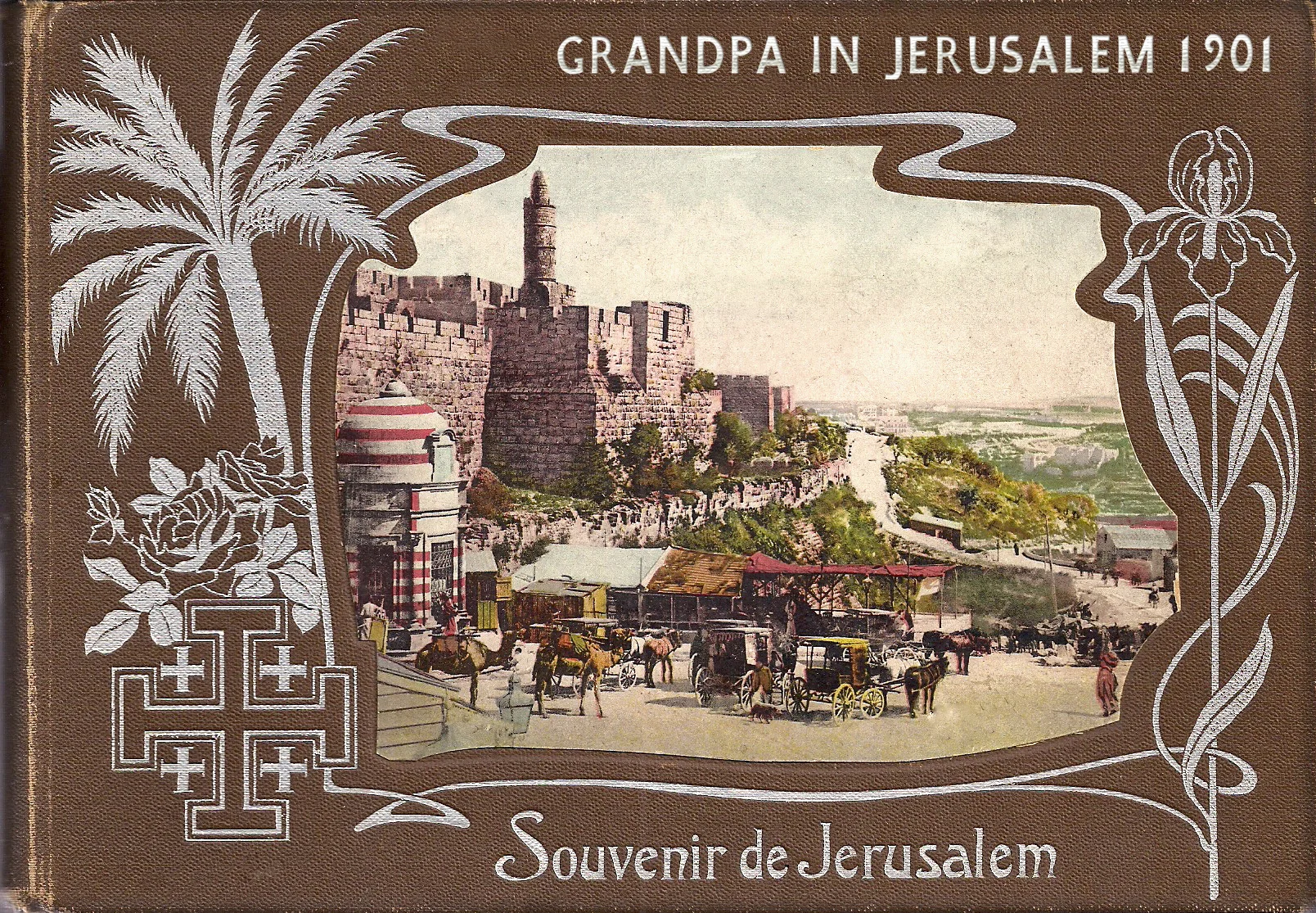Most tourists and pilgrims arrived in the Holy Land by sea, carried by merchant and passenger ships run by European shipping companies that frequented Mediterranean ports. Jaffa was the major sea port of entry to the Holy Land and to Jerusalem from the middle of the 19th century up to 1936. The Jaffa port was in fact a mooring place for boats, while ships anchored beyond the treacherous rocks. Loading and unloading of merchandise and passengers took place on the high seas with the aid of skillful Arab boatmen. At the time, Jaffa left a gloomy impression on visitors; the town was crowded, filthy and noisy. The favored destination of most tourists and pilgrims was Jerusalem, and a paved road led from Jaffa to Ramle and then ascended to the Holy City. It took carriages and mule riders the entire day to traverse the rugged road. However, beginning in 1892, a narrow gauge railroad shortened the trip to about four hours.
Jerusalem was the main attraction for a visitor to the Holy Land. Most sacred sites and historical places of importance were located in the city and its surrounding areas. Elated visitors stayed in Jerusalem for a few days, but many complained about the crowded streets of the Old City and the poor living conditions of the local population.
A typical trip to the Holy Land took two to three weeks. The tourist route outside Jerusalem was dictated by the location of historical sites, local security conditions and available roads. Most tourists and pilgrims traveled south to Bethlehem and Hebron, then descended to Jericho and the Jordan River, followed by a short visit to the northern part of the Dead Sea. They then turned north via Nablus to the Valley of Jezreel, Mount Tabor, Nazareth and Safed. The next point of interest was Tiberias and the area around the Sea of Galilee. Their port of exist was generally Haifa, but some traveled north to Mount Hermon and on to Beyrouth. Only a few courageous tourists went by way of the Sinai Desert to Egypt.
Tourists and pilgrims traveled alone, in small groups and even organized tours, accompanied by local guides and security guards. European style hotels were scarce and could be found in Jaffa, Ramle, Jerusalem, Tiberias, Nazareth and Haifa. In other locations, the visitors had to resort to tent lodges, which were erected every night by a team of porters who followed the tourists with equipment, food and water.
In Jaffa and Jerusalem, in pilgrim hospices and in the better hotels, the tourists could buy oriental souvenirs, photographs, picture albums and postcards of all sorts. Post and telegraph offices were operated first in Jaffa, Jerusalem and Haifa and later in smaller towns. Postal services were provided by the Ottoman authorities and the five European powers that had received such concession from the Sultan.
Following W.W.I , and during the British occupation and Mandatory Period, physical and economic conditions in the Holy Land changed dramatically, and improvements were noticeable everywhere; new roads were built, and additional ports, railway transportation, and modern hotels were available for tourism. From a once neglected province, the Holy Land had become part of the British Empire, one of the most advanced powers in the western world.

